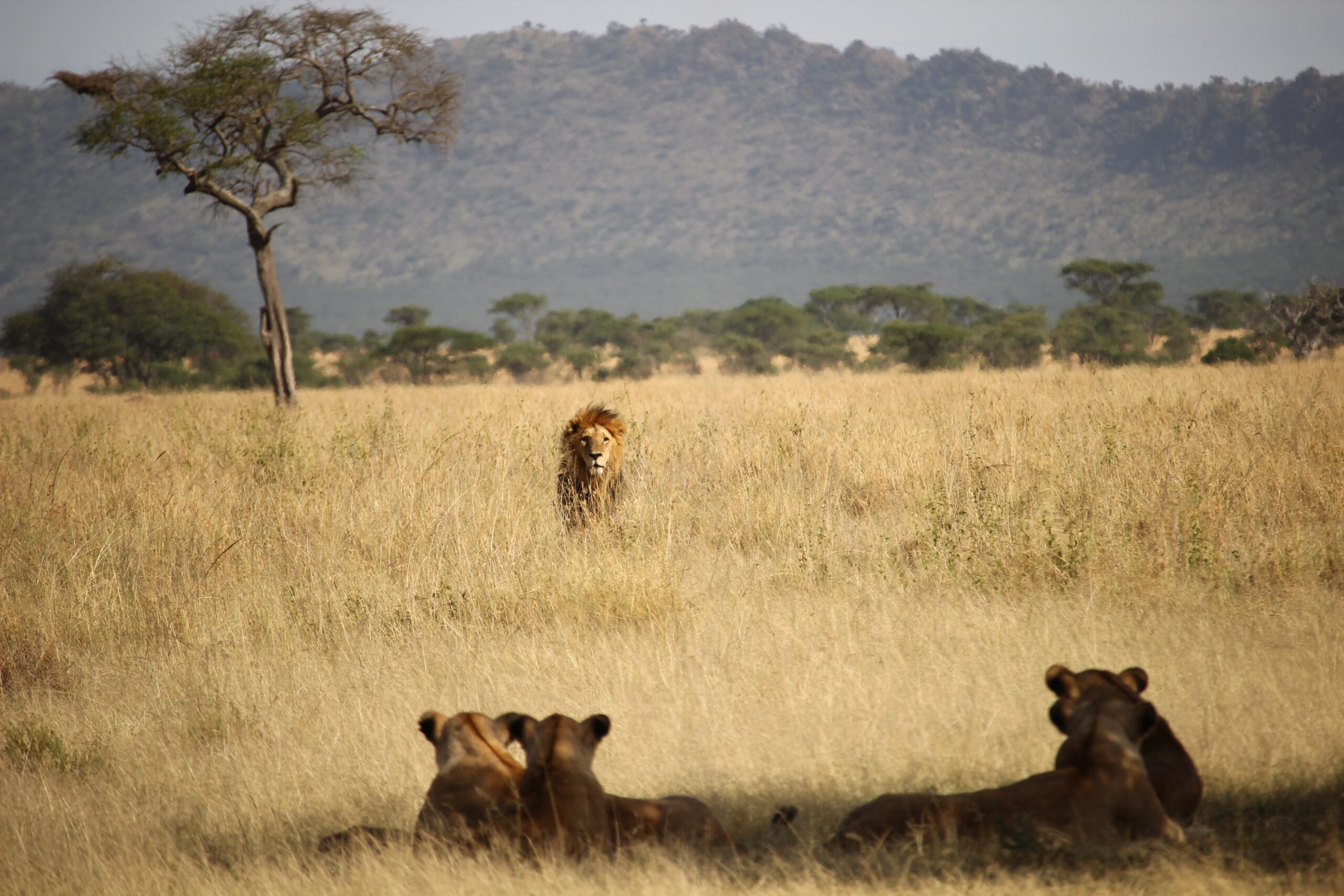This article was originally published in The Hill.
Facts matter and misinformation can have devastating real-world impacts. This is as true in the African bush as it is in the US Capitol. That is why we are deeply concerned when we read overt misinformation about trophy hunting, such as in the opinion pieces by photographer Cyril Christo on 25th January and 10th February.
Trophy hunting is an emotive and polarising issue ripe for misinformation. Much of the discussion on both sides occurs in echo chambers, where falsehoods and half-truths are shared and perpetuated. Misinformation can eventually make its way into policy debates as it has in Congress, the California Legislature, and the UK Parliament. Just as with anti-vaccine falsehoods and climate change denial, these misinformation campaigns must be called out for the significant harm they do. As the scientist Kelvin Peh stated so well: ‘Truth not only continues to matter; it remains the biggest weapon and shield for all wildlife conservationists and environmental scientists in a world of increasingly wanton, politically-motivated myth-making.’
There are many statements in Mr. Christo’s long contributions which could be debated, but three central (and common) misconceptions stand out. These are not unique to Mr. Christo’s articles: these misconceptions are commonly spread by anti-trophy hunting campaign groups. Such misinformation must be tackled so that policy-makers can be better informed.
The first is the idea that trophy hunting is driving species to extinction. Decades of published, scientific research and field experience show this is demonstrably false. There is not, as far as we can tell, a single species where trophy hunting is listed by the International Union for Conservation of Nature’s (IUCN) Red List as a key threat driving it to extinction. Humane Society International, an organization that campaigns against trophy hunting, listed the top 20 species imported by American trophy hunters (the bulk of international hunters). If that hunting was intensifying decline, it would be a major concern in a world that has lost over two-thirds of its vertebrate wildlife since 1970. However, far from hunting driving those species to extinction, nine of the 20 are increasing in numbers and 6 are stable. 18 are ranked as ‘Least Concern’ by the IUCN, with the other two ‘Near Threatened’: so none are threatened species. For four of the 20, including one of the ‘Near Threatened’ ones, trophy hunting is identified by the IUCN as a positive instrument in their conservation, and is implied for a further three species. None of the 20 have trophy hunting documented as a threat to their populations. These facts matter.
Trophy hunting can be successful at conserving wildlife because it provides the economic incentive to conserve large tracts of wildlife habitat where there are few or no alternative funding sources. This helps maintain species, including lions, which can threaten the lives and livelihoods of rural people. One seminal study documented at least 340 million acres conserved by trophy hunting across sub-Saharan Africa: more land than has been set aside for National Parks, where photo tourism is concentrated. Furthermore, there are clear examples where trophy hunting has benefited the conservation of wildlife, including elephants, lions, rhinos, buffalo, argali and many others. These examples are well documented, including in an IUCN Briefing Paper, the academic literature and a US Congress report. Again, these facts matter.
By incentivizing the conservation of wildlife habitat and the maintenance of dangerous species, trophy hunting can play an important role in reducing far greater threats such as habitat loss and poaching. This conservation benefit is particularly significant given that IPBES highlighted land-use change as the primary driver of massive global biodiversity loss. This is why over 130 scientists and local stakeholders, including Chairs of multiple IUCN Specialist Groups, signed a 2019 letter in Science, warning that banning trophy hunting without viable alternatives ready would imperil biodiversity.
The second theme of the misinformation campaign is the false equivalence between trophy hunting and poaching. Trophy hunting differs from poaching as much as shopping differs from shoplifting. In both cases, the former is legal, regulated and generates wider benefits. Conversely, because poaching is illegal and unregulated, it is often indiscriminate, kills many non-target species and plays a key role in wildlife decline.
Oddly, the ‘evidence’ that has been cited for poaching being linked to trophy hunting is that they can occur in the same area, such as in Tanzania’s Selous Game Reserve, which has undoubtedly suffered severe poaching. But recent data from South Africa’s Kruger National Park, one of the most popular photo tourism destinations in Africa, showed that rhino numbers fell by 67% since 2011. Does this mean that ‘where photo-tourism is allowed, poaching follows’? Should photo-tourism be banned, in Kruger or more widely, especially as most African protected areas maintain wildlife far below carrying capacity, due to threats such as poaching?
The sensible answer is no—whether managed for photo-tourism and/or trophy hunting, most African protected areas are woefully under-funded, so removing either one of those key revenue streams without adequate replacement would only exacerbate those threats. For example, in Tanzania’s Ruaha landscape—internationally important for lions and many other species—it is indeed likely that lions are in decline. However, as with many other landscapes, far more lions around Ruaha are speared, snared and poisoned than are killed by trophy hunters. An exaggerated focus on trophy hunting simply draws attention away from the real threats such as intense human-wildlife conflict, or the disempowerment of local people in conservation. This is of real concern.
Clearly, trophy hunting has huge impacts for the individual, and in some cases can negatively impact populations, such as with lions in Hwange or Selous. But in Africa just as in the USA, the science exists that can, and does, underpin sustainable trophy hunting. This includes age-based adaptive quotas and targeted actions such as quota reductions or time-limited moratoria for some species. Poor governance, including corruption, and poor design of and adherence to regulations, can doubtless have real impacts on wildlife in trophy hunting areas, and the same is true for photo-tourism areas.
The key question however is whether removing trophy hunting in an area would ultimately decrease overall threats. Currently, it is unlikely to be the case. Indiscriminate bans, without better alternatives to replace incentives from high-fee trophy hunting to maintain wildlife and habitat, risk significantly amplifying major threats such as poaching and land conversion.
The third, and crucial, topic where we often see misinformation is around trophy hunting and colonialism. Much of the current conservation model—including land set aside for both photo-tourism and trophy hunting—has deep colonial underpinnings, and this must be understood and acknowledged. But that makes it ever more important that today, the post-colonial decision-making and rights of African countries and communities are respected. Westerners must not continue to externally impose their own ideals upon Africans, such as pushing trophy hunting bans and restrictions, where local communities warn they are directly undermining both successful conservation and human rights.
What is all too rarely recognised is that Africans themselves have long realised the failure of conservation models, and have in many places reversed them. At the core of these new African-invented wildlife conservation models is the principle that legal rights should be given back to local people to sustainably use their wildlife. These rights, the global markets that add so much value to a uniquely African product, and the democratic awakening associated with them should not be undermined because utilisation offends people elsewhere. Let the communities that live with wildlife be the ones to decide whether the benefits they receive from trophy hunting are meaningful—as many have. Recently, the Community Leaders Network of Southern Africa made a powerful statement on this very topic. Tired of getting a raw deal, rural African communities are demanding a new deal in which they are shareholders (not disempowered stakeholders) in their own wildlife resource. Thus, externally imposed bans, including import bans, undermine not only the foundations of sustainable wildlife management but also of human rights.
It is strange that although much of the legislation that would affect trophy hunting emerges from the U.S. and UK, neither of those Governments is proposing banning the activity domestically. In fact, hunting has long been a bedrock of North American conservation, and declining hunting revenue domestically is a source of concern for funding wildlife conservation. Imposing different ideals on other countries seems hypocritical, especially with regard to countries such as Botswana, Namibia, Tanzania and Zimbabwe, which rank as 4 of the top 5 countries for megafauna conservation. In comparison, the USA comes 19th while the UK does not make the top 20.
There is also a crucial omission in this debate if it is truly about conservation. Despite the huge amount of media coverage this topic receives, we have yet to see campaigners present viable alternatives for securing the vast habitats, dangerous species and invaluable biodiversity currently conserved by trophy hunting areas. The truth is that, despite some nascent initiatives such as debt for nature swaps, rhino bonds and Lion Carbon, no viable alternatives currently exist at the scale and timeline needed if trophy hunting were removed today.
This is not an unwillingness to countenance alternatives to trophy hunting—several of us are actively working on potential alternatives—but an informed view based on expertise and history. For a historical comparison, it is informative to look at Kenya, and what happened after they banned trophy hunting in 1977. Since then, there has been a precipitous decline in wildlife (averaging 68% for 18 species over 40 years, while livestock numbers increased sharply). People debate the extent to which those declines were linked to the trophy hunting ban, but it is a clear warning of what happens in a system where local stakeholders are more incentivized to raise domestic stock than conserve wildlife. Peer-reviewed research shows a stark contrast between Kenya on the one hand, and Namibia, Zimbabwe, South Africa and Zambia on the other, where utilization (including trophy hunting) enabled landholders to make a living from wildlife, and to reduce their livestock numbers, over the same period. The Kenyan example clearly highlights that removing trophy hunting does not automatically guarantee a better future for wildlife. IUCN recommends developing alternatives which offer equivalent benefits for people and wildlife, in genuine partnership with local stakeholders, before trophy hunting is removed or restricted, even through import bans. In Africa’s tough landscapes and climates this is not a trivial challenge.
Amongst all this debate, there are some welcome, and central points of agreement. We all want nature to thrive. We all must tackle the terrifying threat of climate change. We all want a world where our children can see lions and other wildlife. But to do that, we must secure vast, intact landscapes. While trophy hunting understandably troubles many people, the fact is that right now there are no viable alternatives for securing the vast habitats in Africa that trophy hunting does. As a lower estimate, foreign hunters spend over US$470 million in southern and East Africa each year, well under a quarter of what a better managed sector could earn. It will be a long time before philanthropy or nascent financial models can deliver at the scale and on the timeline required. Until they do, trophy hunting is a finger in the dyke, holding back the existential threats of biodiversity loss and degradation and loss of wild ecosystems.
Loudly spoken misinformation is a blight in conservation, and we need to counter it with pragmatic solutions, examples and scientific evidence. Free speech, diverse viewpoints (including from other scientists) and open debates are the foundation of democracy and innovation. However, denying facts and amplifying misinformation around trophy hunting causes major harm. It harms evidence-based conservation across vast areas, and risks disempowering and disenfranchising many of the world’s most vulnerable people in whose hands the future of our biodiversity increasingly lies. It needs to stop rather than being given platforms.
Dr. Amy Dickman, senior research fellow with the Wildlife Conservation Research Unit at the University of Oxford, and Dr. Adam Hart, professor of science communication at the University of Gloucestershire, contributed to this article.





